When Can Chicks Go Outside? Timing and Tips for a Smooth Transition
- February 5, 2024
- 0 comment
With a background as a seasoned backyard chicken keeper, I’ve faced the complex challenge of moving chicks from the safety of their brooder to the expansive world outside numerous times. This journey is invariably mixed with both trepidation and thrill, affecting not just the young birds but also us, their dedicated caregivers. My intention today is to delve into the nuances of this transition, offering detailed guidance based on my rich tapestry of experiences, peppered with both triumphs and occasional hurdles.
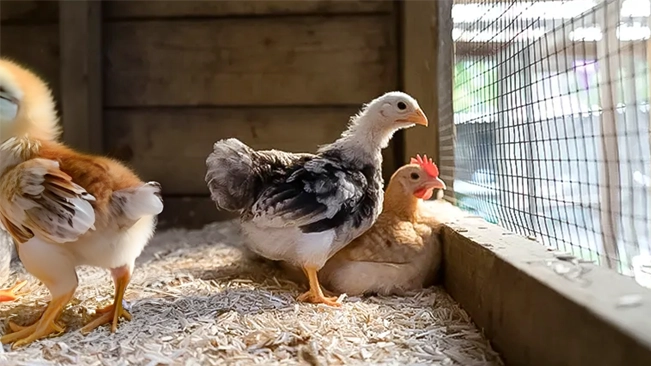
Chicks undergo rapid growth spurts from the moment they hatch, devoting much of their initial weeks to developing their mature feathers, a significant milestone in their journey to adulthood. This phase is marked by a flurry of activity – they begin to produce more dust and a noticeable odor as they grow. This leads to an important question: when is it appropriate for these young chickens to venture outside?
The transition from the confined space of the brooder to a more spacious environment is an essential step, especially as the chicks become more lively and curious about their surroundings. However, determining the right moment for them to make their outdoor debut requires careful consideration.
List on When Can Chicks Go Outside
- When Can I Move My Chicks Out of the Brooder?
- How the Minimum Safe Temperature for Young Chicks
- When Can Chicks Safely Go Outside Without Heat?
- When Can Chicks Safely Go Outside with Their Hen?
- When Can Chicks Safely Join Other Chickens Outside?
- Advantages of Short Outdoor Excursions for Baby Chicks
When Can Chicks Go Outside?
The timing for transitioning chicks outside is not one-size-fits-all; it largely depends on their age, feather development, and the external temperatures. Generally, chicks are ready to start acclimating to the outdoors when they’re about 5 to 6 weeks old. This is around the time their juvenile feathers have grown in enough to provide adequate insulation. However, this guideline comes with a big caveat: the outside temperature must be suitable.
Evaluating Readiness
- Feather Development: Chicks are born with a fluffy down that provides little insulation. As they grow, this down is replaced with feathers. By 5 to 6 weeks, they should have enough feathers to regulate their body temperature, which is crucial for their survival outside.
- Temperature Considerations: The ambient temperature plays a significant role in deciding when to move chicks outside. If it’s still cold, especially at night, you may need to wait longer or provide a heat source in their outdoor enclosure. Ideally, daytime temperatures should consistently be above 50°F (10°C) before you consider moving them out without supplemental heat.
The 7 Important Tips on When Is It Safe for Chicks to Venture Outdoors
1. When Can I Move My Chicks Out of the Brooder?
In the initial stages of their lives, baby chicks experience rapid growth. During the first four weeks, each chick requires a minimum of half a square foot of space. As they advance from their fourth week to the eighth week, their space requirement increases to one square foot per chick due to their growing size and activity levels.
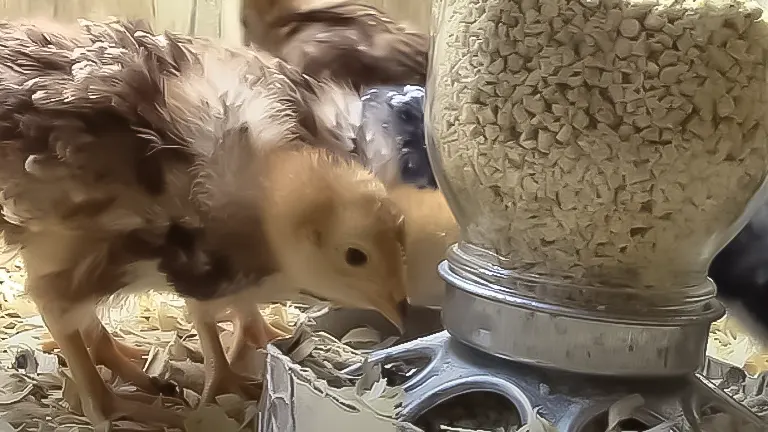
As these young birds develop, their activity levels surge, and they begin to explore their capabilities, including testing their newly developed wings. This heightened activity necessitates a larger living area to accommodate their need for movement and exploration.
Space Needs for Chicks in the Brooder:
Here’s the detailed table showing the minimum space requirements for chicks from weeks 1-4 and weeks 4-8:
| CHICKS | MINIMUM SPACE WEEKS 1-4 | MINIMUM SPACE WEEKS 4-8 |
|---|---|---|
| 4 | 1′ X 2′ | 2′ X 2′ |
| 6 | 1′ X 3′ | 2′ X 3′ |
| 8 | 1′ X 4′ | 2′ X 4′ |
| 10 | 1′ X 5′ | 2′ X 5′ |
| 12 | 2′ X 3′ | 3′ X 4′ |
| 16 | 2′ X 4′ | 4′ X 4′ |
By the time chicks are around four weeks old, their level of activity significantly increases. They enjoy engaging in exercises such as flapping their wings and attempting short flights across their enclosure. This stage marks a crucial point for expanding their living space to at least double its original size to accommodate their active lifestyle and developmental needs.
For instance, if you are raising six chicks in a brooder measuring 1 foot by 3 feet, the space will quickly become inadequate for their needs. To accommodate the increased activity and ensure adequate space for each chick, you should consider relocating them into a brooder that is twice as large, measuring approximately 2 feet by 3 feet. This adjustment ensures that each chick has sufficient room to grow, move, and engage in natural behaviors, which is vital for their health and well-being during this formative period.
2. How the Minimum Safe Temperature for Young Chicks
In the absence of a mother hen to keep them warm, maintaining the correct temperature within the brooder is crucial for the well-being of baby chicks until they have grown a full set of feathers. Typically, chicks achieve full feathering by the age of 6 weeks.
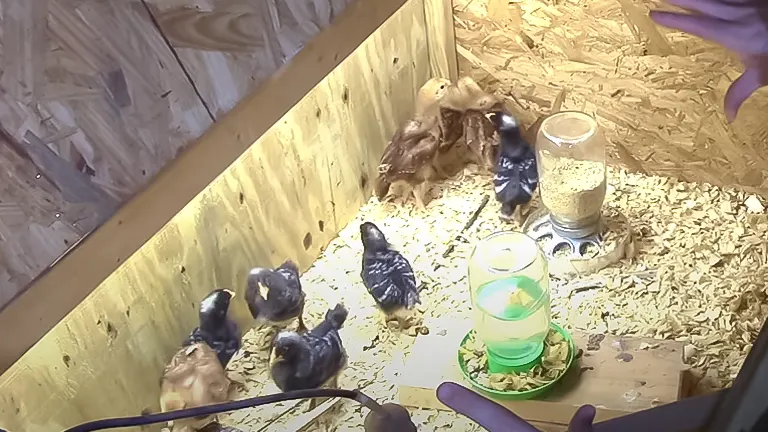
It’s essential to adjust the temperature of the brooder as the chicks grow, with each week necessitating a specific temperature setting to ensure the chicks remain healthy and vigorous. Providing a suitably warm environment tailored to their developmental stage is key to their survival and growth.
Week-by-Week Temperature Guide for Chicks:
Here’s the organized table showing the weekly temperature requirements for baby chicks:
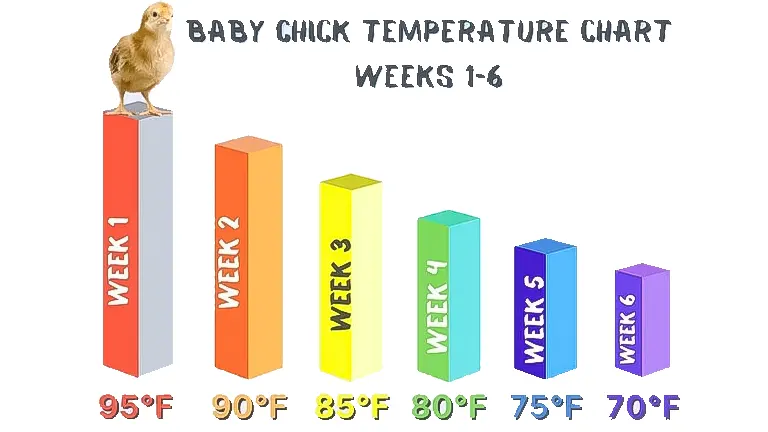
| Age | Heat (℉) |
|---|---|
| Week 1 | 95 |
| Week 2 | 90 |
| Week 3 | 85 |
| Week 4 | 80 |
| Week 5 | 75 |
| Week 6 | 70 |
This table outlines the gradual decrease in required heat as the chicks age, starting from 95℉ in the first week down to 70℉ by the sixth week.
3. When Can Chicks Safely Go Outside Without Heat?
Once the afternoon temperatures are suitable for your chicks’ specific age, it’s an excellent idea to give them a chance to enjoy some supervised time in the sun.
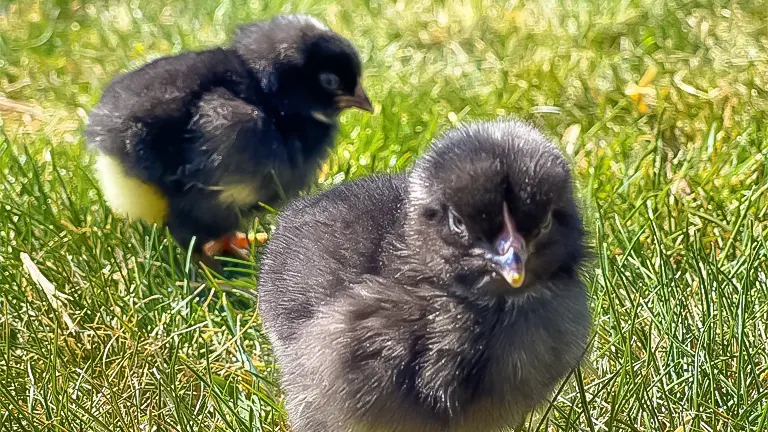
For example, at an outdoor temperature of 85℉, chicks that are three weeks old can safely spend time outside without needing a heat lamp, whereas it would still be too brisk for one-week-old chicks to be outside without extra warmth.
If you’re keen on taking your chicks out for a brief outdoor adventure but find the temperatures on the cooler side, bringing a heat lamp along can ensure they get to experience the outdoors while staying comfortably warm.
Advantages of Short Outdoor Visits for Chicks:
- Outdoor Acclimation: These outings help chicks slowly become accustomed to their future outdoor environment.
- Easier Transition to Coop Life: The transition to living in their permanent coop becomes smoother and less stressful once they are fully feathered.
- Health Benefits from Sunlight: Sun exposure is crucial for chicks as it aids in Vitamin D synthesis, contributing to their overall health.
- Dietary Exploration: Being outdoors allows chicks to forage for bugs, greens, and small pebbles, enhancing their diet.
- Strengthening Bonds: These supervised outdoor sessions offer valuable bonding time, strengthening your relationship with the chicks.
Identifying Signs That Your Chicks are Feeling Cold:
| Signs Your Baby Chicks Are Cold |
|---|
| Chicks Chirp Loudly |
| Chicks Hover Together Under the Heat Lamp |
| Diarrhea |
| Pasty Butt |
| Chicks Puffed Up |
| Chicks Legs Cold |
4. When Can Chicks Safely Go Outside with Their Hen?
From the moment of their hatching, chicks are capable of venturing outside as long as they are accompanied by their mother.
The mother hen possesses an innate ability to maintain her chicks’ warmth. Upon their hatching, she encases them beneath her breast or belly, ensuring they remain there until their feathers are completely dry.
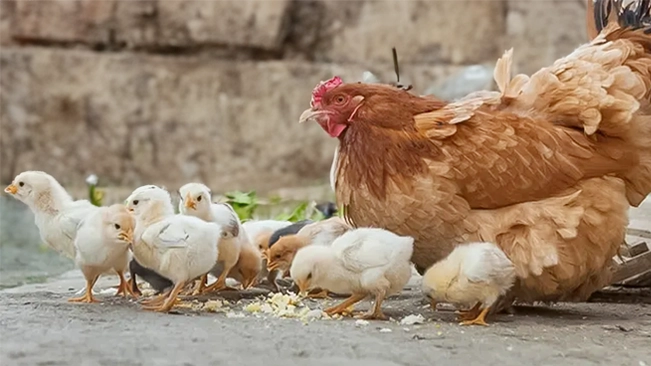
The internal body temperature of a mother hen hovers around 106℉, while the temperature of her skin is slightly lower, at approximately 99.5℉, creating an ideal warmth for the newborn chicks.
When the mother hen feels it’s safe to explore the outdoors, her chicks instinctively stay by her side. She immediately starts educating them on how to forage for food, demonstrating the survival skills they’ll need.
Should a chick wander too far, the mother hen quickly corrals it back with her beak. She then snuggles it under her feathers, providing the necessary warmth and security. This protective behavior ensures the chicks stay safe and warm, even while they begin to explore the world outside the nest.
5. When Can Chicks Safely Join Other Chickens Outside?
When a mother hen hatches chicks, she instinctively shields them from the rest of the flock, facilitating a natural integration process. However, if you’re the one merging two distinct groups of chickens, it’s crucial to ensure they’re of similar size before attempting to combine them.
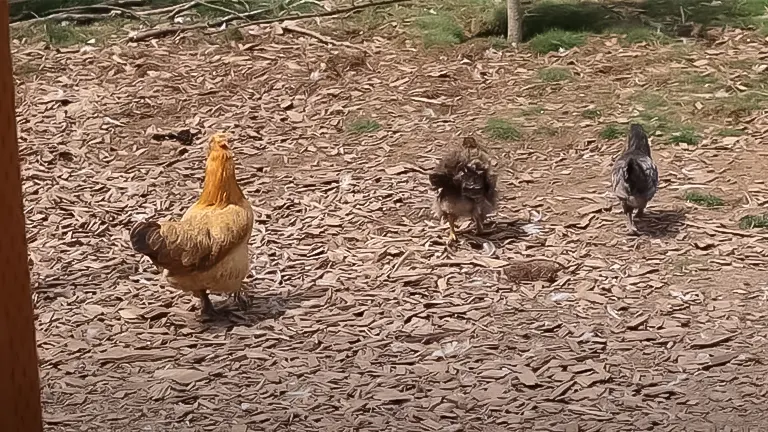
For those looking to introduce a new group of chickens to an existing flock, a preliminary 30-day quarantine period is recommended. This step is essential for preventing the potential spread of diseases the newcomers might carry.
Post-quarantine, the next phase involves placing the two groups within sight and sound of each other, yet separated by chicken wire. This arrangement allows them to acclimate to each other’s presence gradually.
Integration should ideally occur when the new chickens have grown to match the size of the existing flock. There are various strategies for this process: some prefer to add the newcomers to the roost during the night, while others choose to merge the flocks during free-range time.
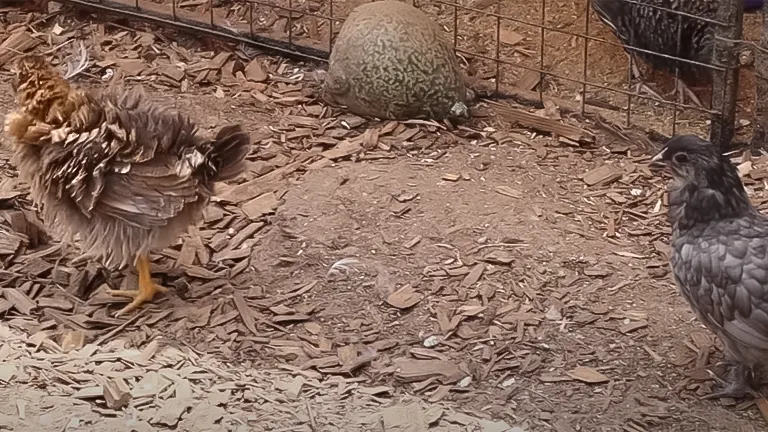
Both methods are viable, but it’s important to closely monitor their initial interactions, especially in the morning as they exit the coop. If merging them during free-range hours, offering treats can help distract them, minimizing conflict as they establish their new social hierarchy. It’s natural for some pecking and chasing as they sort out their “pecking order.”
Should there be no serious aggression or bloodshed, it’s usually best to let them resolve their hierarchy on their own. However, if a particular chicken becomes overly aggressive, isolating it in “chicken jail” for a few days can effectively diminish its dominance, promoting a more harmonious flock dynamic.
Guidance on Merging Two Chicken Groups:
Transitioning your chicks from the brooder into the coop is a significant milestone and needs to be handled with care to ensure their well-being.
| Tips for Combining Two Flocks of Chickens |
|---|
| Quarantine New Chickens for 30 Days |
| Separate 2 Flocks with Chicken Wire |
| Both Flocks Should Be of Equal Size |
| Combine 2 Flocks at Night |
| Introduce While Out Free Ranging |
| Monitor Them Closely |
| Be Prepared to Separate Aggressive Chickens by Placing Them in “Chicken Jail” |
This table serves as a guideline to ensure a smooth and safe integration of two chicken flocks, emphasizing the importance of quarantine, gradual introduction, monitoring, and managing aggressive behavior.
6. Advantages of Short Outdoor Excursions for Baby Chicks
Taking baby chicks outside for brief periods offers several key benefits, enhancing their overall development and well-being:
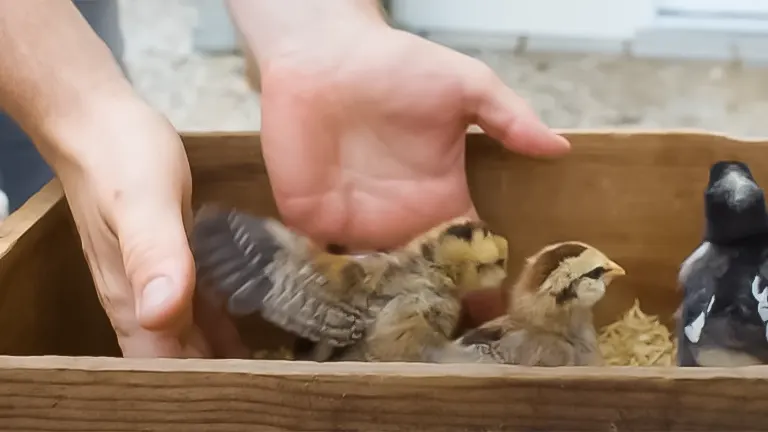
- Acclimatization to Outdoor Environments: Short, supervised outings help chicks gradually familiarize themselves with the outside world, making the transition less overwhelming.
- Easier Adaptation to Their Permanent Coop: Once chicks have developed their full feathering and start residing in their permanent coop, the prior outdoor experience reduces the stress and trauma associated with this significant change.
- Vitamin D Absorption: Direct sunlight exposure is vital for chicks, as it aids in the synthesis of Vitamin D, essential for healthy bone development and immune function.
- Natural Foraging Behavior: Outdoor time enables chicks to engage in natural behaviors like pecking at small insects, greens, and pebbles, which is crucial for their nutritional and developmental needs.
- Immune System Strengthening: Regular exposure to the varied elements and microorganisms found outdoors helps build a robust immune system, better preparing them to ward off diseases.
- Physical and Mental Development: The physical activities involved in outdoor exploration contribute to stronger, healthier chicks, both physically and mentally.
- Entertainment and Stimulation: Being outside keeps chicks engaged and entertained, offering a break from the confines of their brooder and stimulating their senses and curiosity.
- Bonding Opportunity: These outdoor sessions provide a unique opportunity for you to bond with your chicks, establishing trust and familiarity as you oversee their safety and exploration.
Pros and Cons
Pros
- Chicks develop stronger immune systems by being exposed to the outdoor environment gradually.
- Early outdoor exposure helps with socialization and reduces stress when transitioning fully outside.
- Managing smells and mess becomes easier when chicks move out of the house.
Cons
- The process requires careful planning and constant vigilance to avoid exposing chicks to harsh conditions or predators.
- Initial outdoor sessions can be time-consuming and require a secure, predator-proof setup.
Related Articles:
- Best Bedding For Chickens
- Best Safe Chicken Coop Heater
- 8×8 Chicken Coop Plans
- Turning a Shed Into a Chicken Coop
- How to Make a Chicken Coop Out of Pallets
- Best Sand for Chicken Coop
- How To Insulate a Chicken Coop
- How To Heat a Chicken Coop
- How To Keep Water from Freezing in Chicken Coop
- How to Build a Chicken Coop
- How To Build Chicken Nesting Boxes
Final Thoughts
Transitioning chicks to the outdoors is a critical step in their development and one that can significantly affect their health and happiness. Based on my experience, the key to a successful transition lies in waiting for the right moment when the chicks are physically ready and the weather is conducive. Patience, observation, and a bit of trial and error have been my best teachers through this process.
For anyone embarking on this journey, remember: each flock is unique, and what works for one group of chicks may need adjustment for another. Your attentiveness and responsiveness to their needs will be your greatest asset in ensuring a smooth transition.
Frequently Asked Questions
- At what age can chicks first go outside?
Chicks can begin short, supervised outings by 2-3 weeks of age, weather permitting, to gradually acclimate them to the outdoors. - How do I know if it’s warm enough to take my chicks outside?
Ensure outdoor temperatures are close to the brooder temperature they’re accustomed to. A good rule of thumb is to wait for a sunny day when temperatures are above 70°F (21°C) for young chicks. - Do chicks need a heat source outside?
Yes, if the temperature is below what they require based on their age, or if they show signs of being cold, such as huddling together. - How long can chicks stay outside?
Start with short periods (15-30 minutes) and gradually increase as they show comfort and the weather allows. - What signs indicate chicks are too cold while outside?
Look for huddling, loud peeping, and lethargy. These signs mean they should be warmed up immediately. - Can I leave chicks outside overnight?
Chicks should not be left outside overnight until they are fully feathered (around 6 weeks old) and the nighttime temperatures are adequately warm. - How can I safely introduce my chicks to the outdoors?
Begin with a secure, predator-proof enclosure and monitor them closely to ensure they are comfortable and safe. - What are the benefits of taking chicks outside?
Benefits include exposure to natural sunlight for vitamin D, encouraging foraging behaviors, and helping them acclimate to their future living environment. - When can chicks join the adult flock outside?
Chicks can typically be integrated with adult chickens around 8-10 weeks of age, but this depends on their size and the temperament of your flock. Ensure a gradual introduction to prevent bullying. - How do I prepare the outdoor space for my chicks?
Ensure the area is secure from predators, free from harmful plants or substances, and provides shelter, food, and water. Consider a chick-safe enclosure within the larger chicken yard for gradual integration.
We’re eager to hear from you! Share your personal experiences and insights on transitioning chicks to the outdoors, including timing and tips for a smooth transition, in the comments section below. Your stories and advice could greatly assist fellow backyard chicken enthusiasts in making well-informed decisions for their feathered friends!

Edward Smith
Forestry AuthorWoodworking is about more than crafting; it's a harmonious connection with nature, mastering tools, and preserving our environment. I'm here to share my knowledge and experiences with you, forging a future where we can embrace wood's beauty and utility while safeguarding our forests' health and diversity.





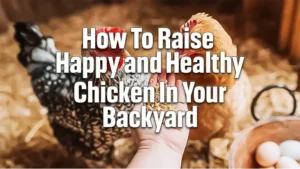

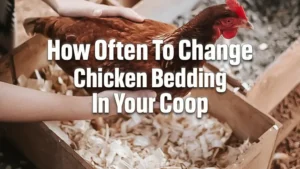


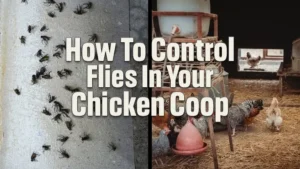


Leave your comment